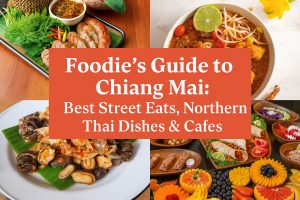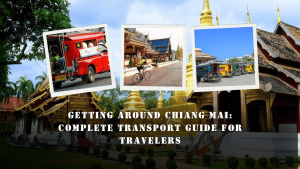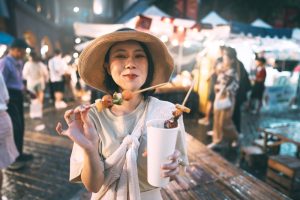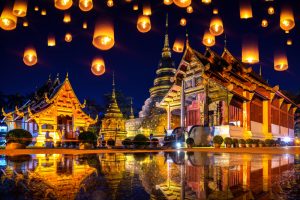
Top Family-Friendly Activities in Chiang Mai
Planning a family trip, and you’re wondering where to go? Chiang Mai is the best destination to escape from hectic life and relax with your family. Chiang Mai is one of Thailand’s top family-friendly destinations, offering the perfect mix of culture, adventure, and relaxation. Unlike the hustle and bustle of Bangkok or the party atmosphere of Phuket, Chiang Mai has a calmer, more laid-back vibe, making it ideal for families traveling with kids. Here, little ones can learn about Thai traditions, enjoy outdoor adventures, and connect with nature in a safe and welcoming environment. From ethical elephant encounters and exciting water parks to interactive museums and hands-on workshops, the city truly has something for every age group. The best time to plan a family trip is between November and February, when the weather is cool and pleasant, making outdoor activities even more enjoyable for kids. Chiang Mai isn’t just a travel destination-it’s an experience that brings families closer together. Whether it’s the joy of watching your kids feed elephants, their laughter as they splash around in water parks, or the awe in their eyes while exploring ancient temples, every moment here becomes a memory worth keeping. With its blend of culture, nature, and fun-filled activities, Chiang Mai offers families not just a holiday, but a chance to slow down, connect, and create stories they’ll cherish long after the trip ends. This blog will guide you through the very best family-friendly adventures, tips, and hidden gems to make your Chiang Mai journey as smooth and unforgettable as possible. Outdoor & Wildlife Adventures in Chiang Mai 1. Chiang Mai Zoo & Aquarium A classic stop for families, the Chiang Mai Zoo & Aquarium combines wildlife and underwater wonders in one place. Your kids can visit the famous panda house, walk through the massive aquarium’s underwater tunnel, and hop on the child-friendly tram that makes exploring the large grounds much easier. It’s both fun and educational, with plenty of animal encounters to keep children entertained. 2. Elephant Nature Park If your family loves animals, the Elephant Nature Park is a must-visit. Unlike traditional camps, this sanctuary focuses on rescue and rehabilitation, skipping the harmful elephant rides. Families can feed the gentle giants, watch them bathe in the river, and learn about wildlife conservation. It’s an inspiring, hands-on experience that teaches children the value of compassion and protecting animals. 3. Chiang Mai Night Safari For a truly unique adventure, take the family to the Chiang Mai Night Safari. This open-style zoo lets you hop on a tram and watch animals in their natural habitats after dark. Kids will be thrilled to spot giraffes, zebras, tigers, and more, all while enjoying live animal shows and interactive feeding sessions. It feels like stepping into a real-life jungle adventure. 4. Bua Thong Sticky Waterfalls One of Chiang Mai’s most unusual natural attractions, the Sticky Waterfalls at Bua Thong are perfect for active families. Kids and adults can walk through the grippy limestone surface, and kids can safely climb up the cascading rocks without slipping. It’s a mix of adventure and play in a beautiful forest setting, great for cooling off on a hot day. 5. Grand Canyon Water Park Thinking about a place that has floating playgrounds, giant slides, and inflatable obstacle courses? The Grand Canyon Water Park is every child’s dream. Life jackets are provided, making it safe for younger kids, too. Whether they’re splashing around in shallow pools or tackling the bigger slides, this water park promises a day full of fun and laughter for the whole family. 6. Huay Tung Tao Lake For a more relaxed outing with your family, head to Huay Tung Tao Lake, just outside the city. Families can rent paddle boats, cycle around the scenic lakeside, or simply unwind in bamboo huts while enjoying delicious local food served right to your table. It’s the perfect spot for a laid-back family picnic with mountain views in the background. Cultural & Educational Experiences Chiang Mai isn’t just about wildlife and adventure; it’s also a cultural treasure chest where kids can learn through hands-on, interactive experiences. Exploring temples, museums, and cultural shows provides families with an opportunity to immerse themselves in Northern Thailand’s traditions in a fun and memorable way. 1. Family-Friendly Temples Chiang Mai is splendid with temples and cultural buildings, but luckily, a few stand out for their history, atmosphere, and family-friendly accessibility. Wat Chedi Luang and Wat Phra Singh are among them. Wat Chedi Luang, located right in the heart of Chiang Mai’s Old City, just a short walk from Tha Pae Gate, is easy to fit into your trip. It is known as the Temple of the Great Stupa, is one of those places in Chiang Mai that instantly takes you back in time. Walking around the temple grounds, you’ll come across the main assembly hall with its striking standing Buddha, the sacred City Pillar shrine said to protect Chiang Mai, and even a replica of the famous Emerald Buddha, which was once housed here before being moved to Bangkok. One of the most unique experiences is the chance to join monk chats, where you can sit down with young monks and have an open, friendly conversation about Buddhism, culture, or even everyday life in Thailand. The massive naga and elephant carvings also fascinate younger visitors. With its mix of history, spirituality, and peaceful atmosphere, it’s the kind of place where you’ll want to slow down, take it all in, and connect with the soul of the city. Wat Phra Singh is known as the Temple of the Lion Buddha, is one of Chiang Mai’s most beloved temples and a place that really shows off the beauty of traditional Lanna architecture. It’s famous for the Phra Singh Buddha image, one of the most sacred statues in northern Thailand, which locals come to worship and visitors come to admire. Wat Phra Singh, Known for its golden pagodas and beautifully decorated murals, this temple is a smaller and easy to










